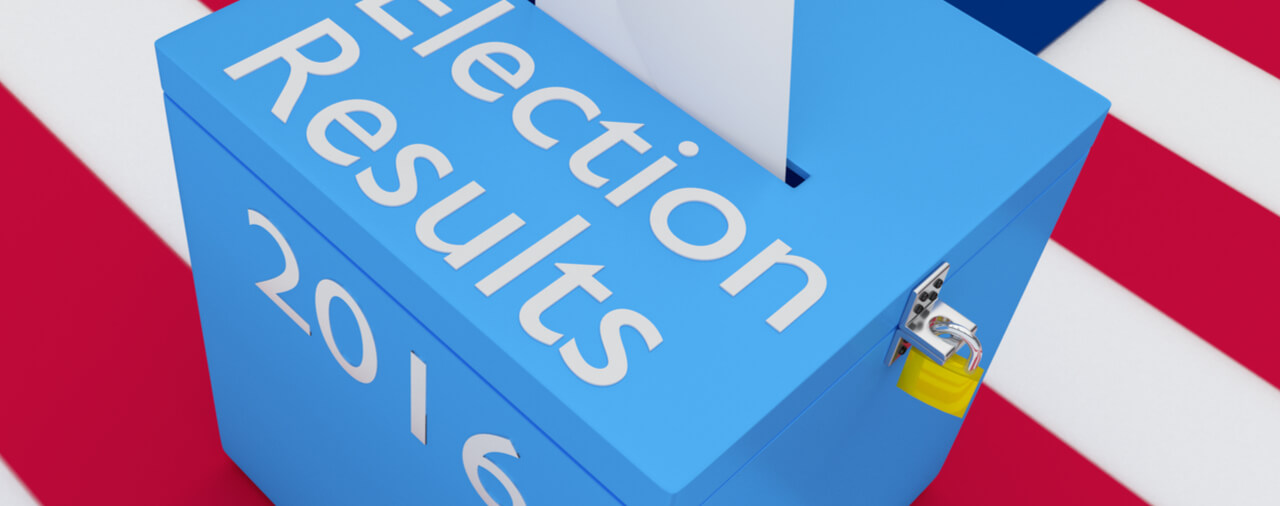Election Issues and Immigration #14: Analysis of the 2016 Election Result
November 8, 2016, will be forever remembered in American history as the day that Donald J. Trump became the President-Elect of the United States, defeating Hillary Clinton in what was perhaps the most dramatic upset in a Presidential election since President Harry Truman defeated then New York-Governor Thomas Dewey in 1948. When President-Elect Trump takes the oath of office on January 20, 2017, he will be welcomed by barely-reduced Republican majorities in the U.S. Senate and U.S. House. Furthermore, although we will not discuss it in this post, the Republicans expanded their majority in state Governor Offices (the GOP now controls 34-35 of the 50 Governor offices) and the state legislatures.
I joined many Republicans in fearing the worst when President-Elect Trump became the presumptive nominee on May 3, 2016. This was both because of reservations about the nominee and fears that his presence at the top of the Republican ticket would lead to substantial losses down-ballot. Instead, voters across the country voted for Republicans up and down the ballot, leaving the Republican Party in its most commanding position since the Herbert Hoover administration and the Democratic Party in the political wilderness.
In this article, I will offer my analysis of the election result. In my companion post, I will provide my analysis of what the comprehensive Republican victories mean on a variety of issues going forward [see blog].
Analysis — What Happened?
Although polls in the Presidential election tightened in the final two weeks, the evidence indicated that Hillary Clinton was the favorite to claim the White House. This was because many of the apparent true toss-up states — Florida, Iowa, and North Carolina — were all necessary but not sufficient for a Trump victory. Meanwhile, even if the current President-Elect were to sweep those states, he would still have to hold close states such as Ohio and Arizona and pick off states that appeared to be leaning toward Clinton. While hoping for the best, I feared what a Clinton victory may mean for the Senate, where the Republicans faced the difficult task of defending 24 of the 34 seats up for election.
President-Elect Trump's victory was predicated upon dramatically exceeding expectations in the Midwest. Having carried Florida and North Carolina, it was incumbent upon Trump to break Clinton's proverbial firewall in the Midwest, where he had appeared to be competitive but lagged in the polls. President-Elect Trump won decisively in two Midwestern states — Ohio and Iowa — where he had been favored. However, he also carried Pennsylvania and Wisconsin, two states that had not fallen into the Republican column since George H.W. Bush's landslide victory in the 1988 Presidential election. Furthermore, it appears that Trump has also carried Michigan, another Midwestern state that Republicans had not won in a Presidential election since 1988.
Early in his campaign, Trump claimed that he would be able to win over the so-called “Reagan Democrats,” people who vote Democrat but may have a natural home with the Republican Party. Although I questioned whether it was possible, the President-Elect delivered on one of his campaign promises, substantially out-performing previous Republican nominees in rural and less populated areas across the Midwest (including in Minnesota where Trump had a strong performance but came up slightly short).
An interesting blog post courtesy of philly.com explained the unique appeal of the President-Elect in Pennsylvania [link].1 In Pennsylvania, both Trump and incumbent Senator Pat Toomey emerged victorious. The post explains that Toomey dramatically out-performed Trump in the Philadelphia suburbs while Trump performed substantially better than Toomey in the rural and less populated areas of the state. It quotes Toomey's campaign manager, Mark Harris, as stating, “We did it the way Republicans have done it for the past 20 years.” Regarding Trump, Harris observed that “Trump found a new way.” Political scientists will certainly have plenty to study in the Pennsylvania results, where the two most prominent Republicans on the ballot assembled different coalitions of voters to narrowly claim victory in the state. Many Republican-leaning voters who were alienated by Trump still voted for Senator Toomey, a notable Trump non-endorser, whereas many voters who do not typically vote Republican turned out for the President-Elect, but not for Senator Toomey.
The Congressional races provided good news for Republicans and conservatives backing Trump and those who chose a different path regarding the Presidential race. Republicans managed to hold their losses in the Senate to two — Senators Mark Kirk of Illinois and Kelly Ayotte of New Hampshire — in maintaining the Senate with either 51 or 52 seats (it will likely be 52 after a runoff election in Louisiana next month). Republicans prevailed in Florida (Marco Rubio), Pennsylvania (Toomey), and Wisconsin (Ron Johnson), three of the four races I highlighted in my endorsements blog [see blog]. Republicans also won seats in competitive races in North Carolina, Missouri, Indiana, and Arizona. Former Presidential candidate Rand Paul also captured a second term in his race in Kentucky [see blog on Paul]. Unfortunately, the Republicans missed their only pickup opportunity in the cycle, where Congressman Joe Heck, who I highlighted in my endorsements blog, was narrowly defeated. However, I am certainly happy with the results in the Senate races. The elections for the U.S. House were no less successful, with the Republicans sustaining a substantial majority in the lower chamber with negligible losses.
How Did Trump Win if More People Voted for Clinton?
Many people are wondering how Donald Trump is the President-Elect when Hillary Clinton received more votes. This is because the President is not elected by the people, but rather by electors sent by each state to the Electoral College. While electors from certain states are able to cast their votes for a person other than the winner of the plurality of the popular vote in the state, electors almost always follow the preference of the people of the state [see blog]. In this election, it appears that President-Elect Trump may have lost the popular vote (we will not know the final result for a few more weeks) while winning a clear majority in the Electoral College. Many may recall that the same happened in the 2000 Election, where George W. Bush narrowly won the Electoral vote while narrowly losing the popular vote to Al Gore. Both sides were aware of the rules going into the election, and that is why we saw Hillary Clinton concede defeat on election night and then deliver a gracious concession speech the next day.
Because this is an interesting issue, I will post a blog in the near future addressing the Electoral College and why I think it is the best way for the United States to choose Presidents.
Conclusion
The 2016 election season was as fascinating as it was contentious. While I hoped for a positive result for the Republicans, I was surprised by the comprehensive nature of the Republican victory. To read my thoughts on what the result means, please see the final post in my series on immigration issues and the election [see blog]. Please see my introductory blog post for a directory of other posts from this series [see blog].
______________________

- Alexander J. Segal's blog
- Log in to post comments
